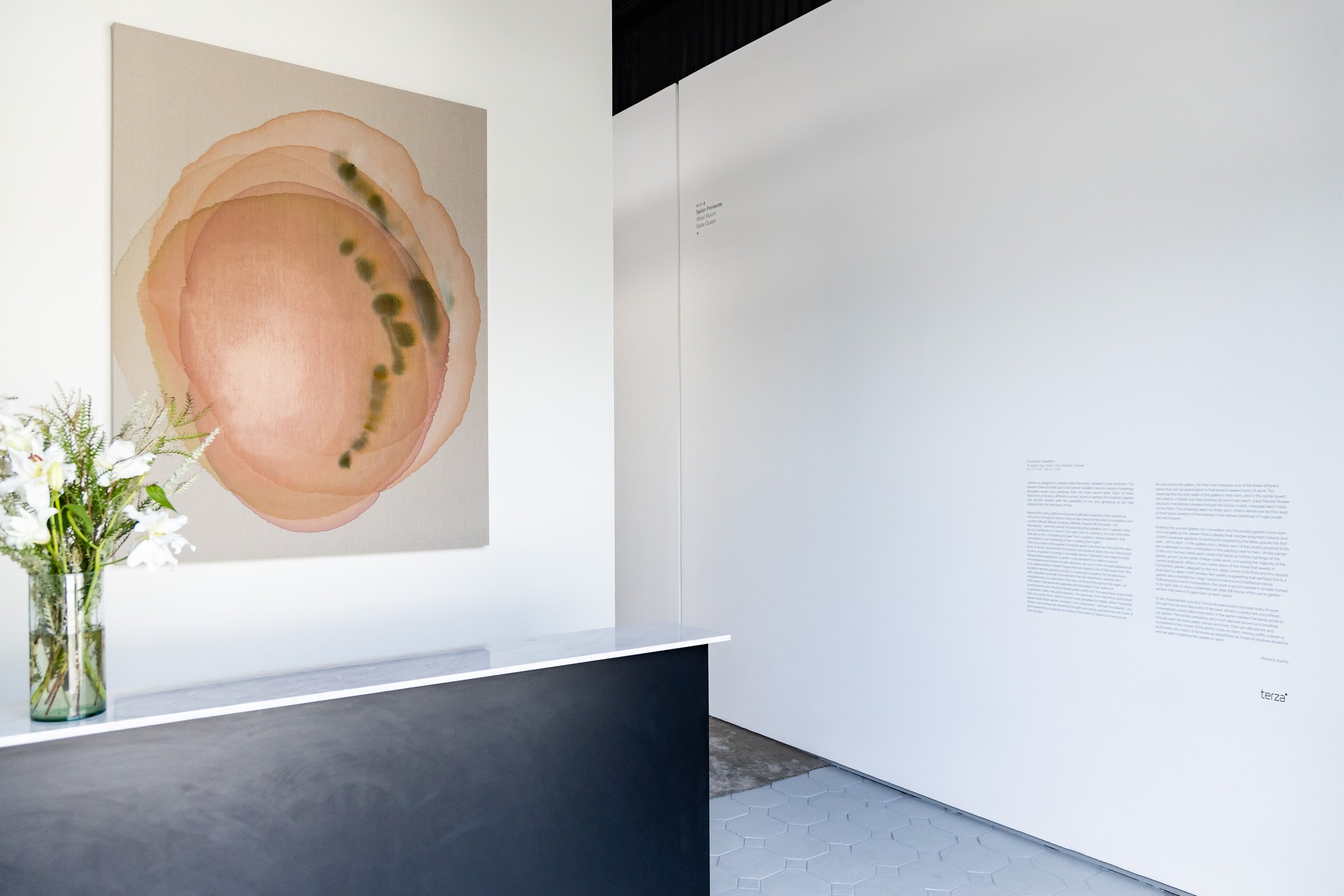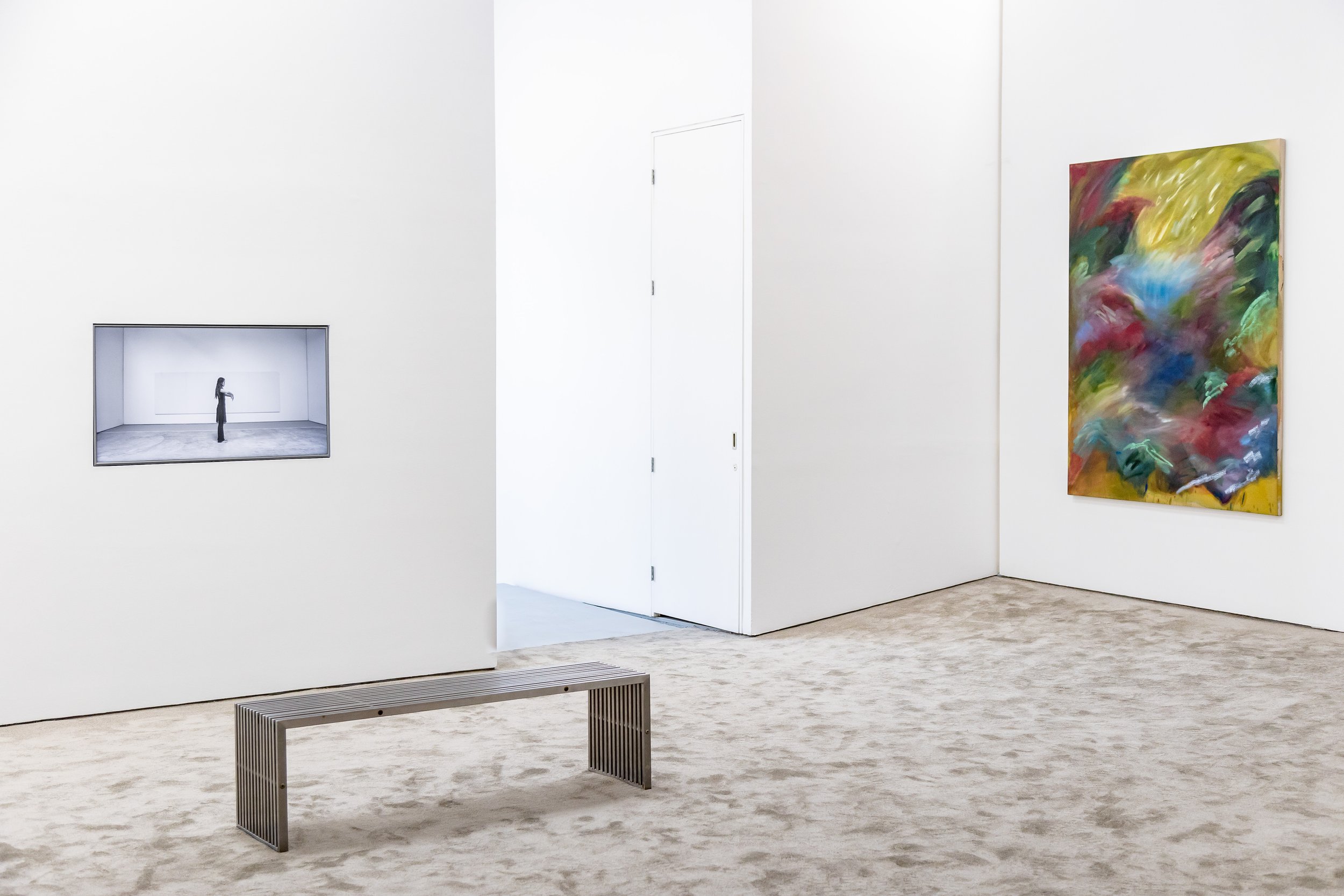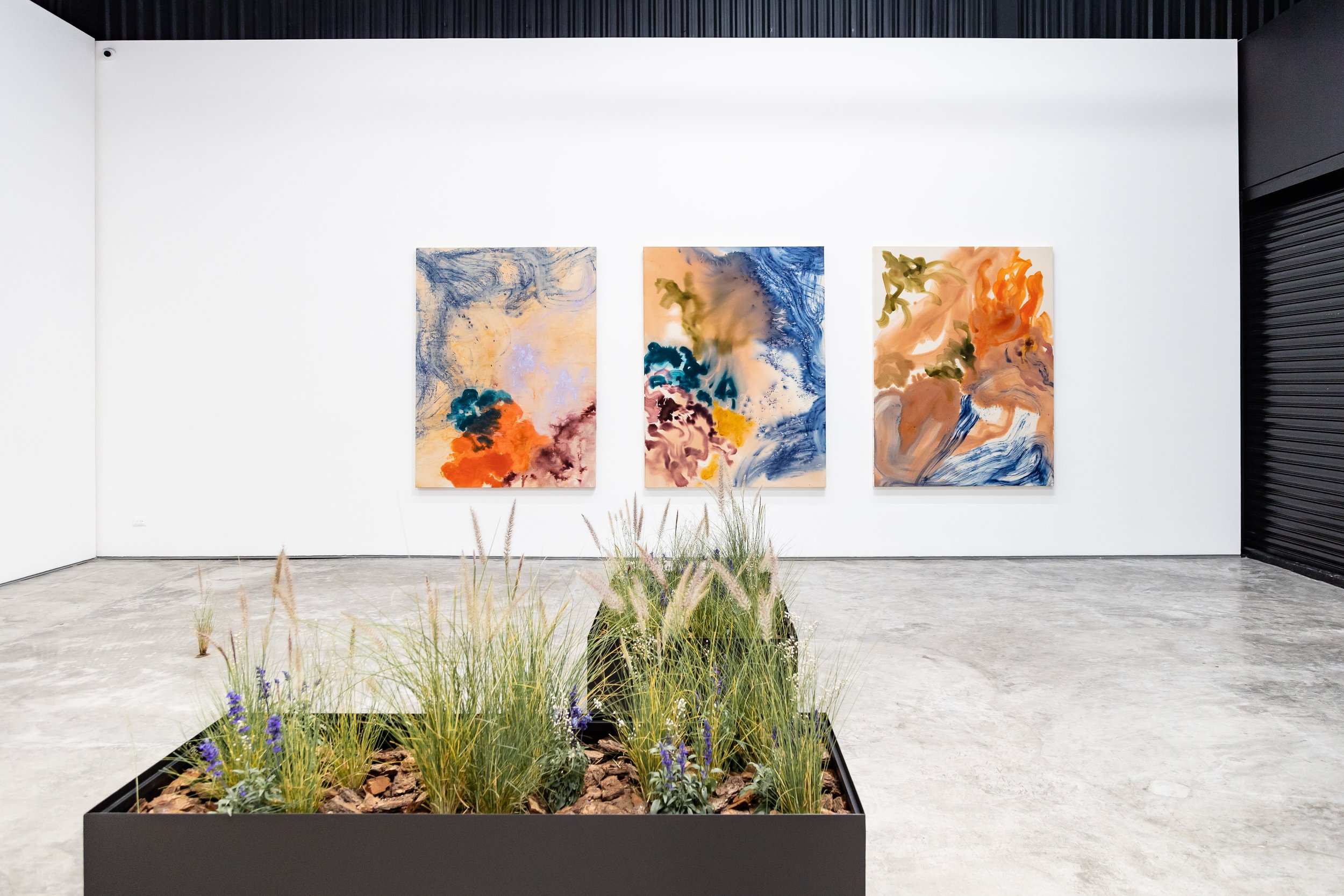Fernanda Caballero
EL JARDIN QUE CRECI (THE GARDEN I GREW)
Feb 24, 2024
Colector is delighted to present artist Fernanda Caballero’s solo exhibition The Garden I Grew (El Jardín que Crecí) where Caballero debuts a series of drawings alongside seven new paintings from her most recent work. Each of these depictions embody a different moment, scene or section of Fernanda’s garden and provide viewers with the possibility of not only glimpsing at but fully stepping into this sanctuary of hers.
Beyond the many political and social implications gardens have served as mirrors for, throughout history, they’ve also become the artist’s companion and comfort. Monet, Renoir, Hockney, Michell, Krasner. All entrusted – by themselves – with the pursuit of preserving their gardens. Isn’t a garden, after all, our contribution to nature? Our claim over its creations, but one of the few that stems from fondness and awe? Isn’t a garden a tender assertion that culminates in our mothering of them, holding them safe?
This is the case for the garden Fernanda grew. One that has, through this new body of work, transcended its location and physical state into one untouched by time. A painter of portals in her earlier works, Fernanda now depicts what follows these gateways: a garden now obedient to a distinct nature, immortalized and tended to with devotion, as much in its conceptualization as in its solemnization. Robert Pogue Harrison stated in his 2008 essay that “the ancients viewed gardens as both a model and a location for the laborious self-cultivation and self-improvement that are essential to serenity and enlightenment, an association that has continued throughout the ages”, an affirmation that becomes palpable and traceable in the realms of contemporary arts. As Anna Starling also points out “humans have long turned to gardens—both real and imaginary—for sanctuary from the frenzy and tumult that surrounds them”, which is even more probable for artists. When Fernanda asked what these works invoked in me, I answered – almost impulsively – joy. Where some things are inherently thought-provoking, gardens may be more of spirit-expanding, physical concoctions that seem to harbor as much joy as they do labor.
As one enters the gallery, the first room displays one of the three different series that can be appreciated in Fernanda’s newest body of work. Ten drawings line the side walls of the gallery’s first room, and in the center guard two sisters: a flower duo that presides all over it can reach. Each framed flower bouquet mesmerizes viewers through the divine cryptic message each holds out for them. The drawings seem to finish each other's sentences as they lead to their larger versions of themselves in the canvas paintings of huge purple and red flowers.
Entering the second gallery, the immersion into Fernanda’s garden turns even more tangible as the viewer finds a display that merges enigmatic forests and colorful Japanese gardens. A painting trio inspired by the latter graces the first wall – left to right – in the gallery room, where each of the works' physical limits are challenged by their continuation in the painting next to them. At the center of the room lie two metal plant cubes that serve as further sightings of the garden grown by the artist. A large-scale work, occupying the majority of the central wall panel, offers a three meter vision of the forest that awaits in Fernanda’s garden, plagued by the rich, deep colors of its flora and tiny specks that seem to gleam with fantasy-like quality, suggesting that perhaps this is a garden also inhabited by magic beyond science and traditional nature. Following the room’s composition, the work is accompanied in smaller format to its right side. A more condensed yet clear still-frame of the same garden section that seems to gaze back at each visitor.
In her characteristic practice, Fernanda permeates this new body of work through the use and discovery of her own, where a careful yet unconfined choreography takes place over each, in the same manner Fernanda tends to her garden. Fernanda’s presence very much dances around and breathes through each archival paper, canvas and linen. One can still admire and comprehend the moves of the artist’s body on them, tracing softly, rushed or profoundly, the marks of her limbs as identifiable as those of brushes would be, and her spirit inhabiting the garden in each.
-
Renata Kalife, 2023












